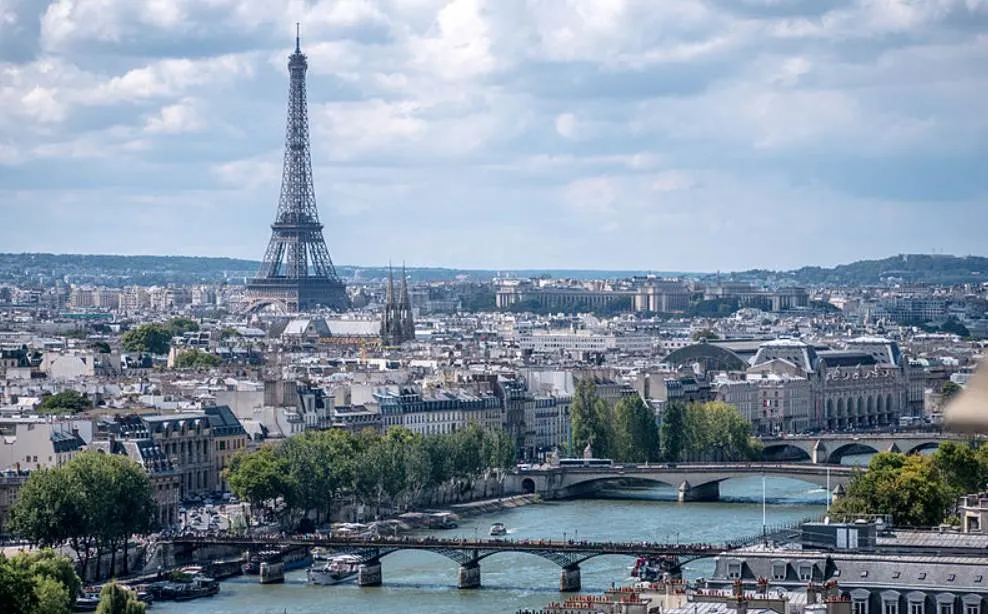You won’t find any spectacular bridges in Paris, but every bridge that crosses the River Seine has its own story to tell. This is especially the case for a bridge that crosses the river right in the historical heart of the city.
In this article, we’ll take a closer look at some of the most interesting facts about the Pont des Arts, a remarkable structure in the City of Light.
1. It connects two famous buildings in the heart of Paris
The Pont des Arts literally translates to “The Bridge of the Arts” and is also sometimes referred to as the “Passarelles des Arts.” That’s because it’s a pedestrian-only bridge that allows people to easily cross the River Seine in the heart of Paris.
It connects two historic buildings with each other, the Institut de France on the southern bank of the river, and the main square of the Louvre Museum on the northern bank. This isn’t the square where you find the iconic Louvre Pyramid as this is located further to the west.
The Institut de France is a magnificent Neoclassical building that was commissioned in 1661 to serve as the home of the “Collège des Quatre-Nations,” a department of the University of Paris. Today it’s a so-called “learned society” that combines 5 different academies.
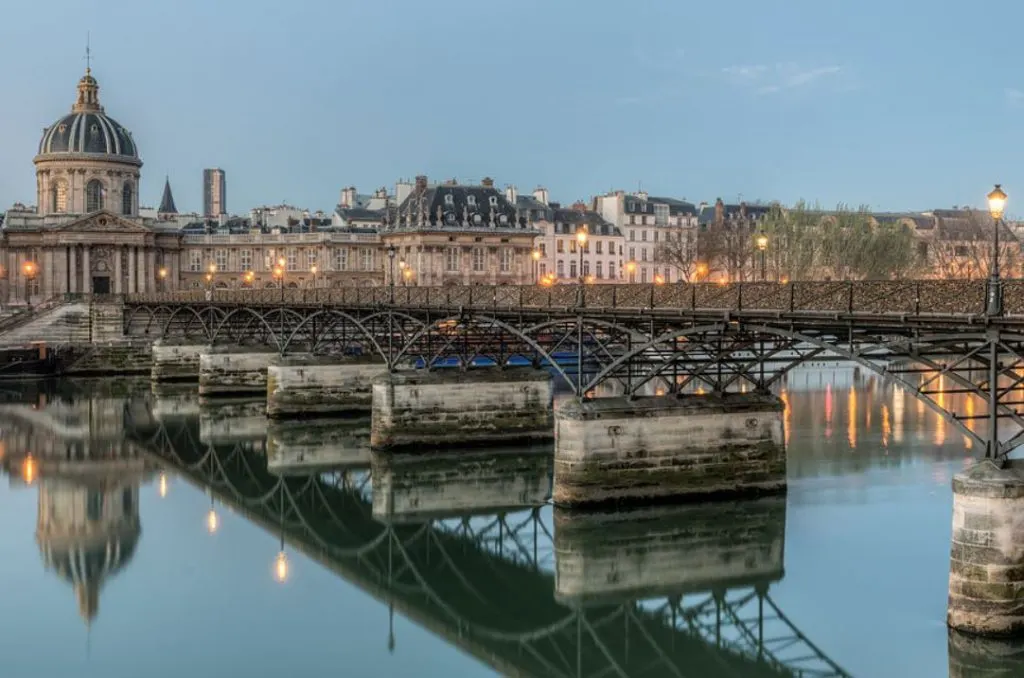
2. It was commissioned by Napoleon Bonaparte in the early 19th century
The bridge was originally commissioned in the early 19th century to connect the Institut de France with the Louvre.
During the First French Empire (1804-1814/1815), the most famous museum in the world was referred to as the “Palais des Arts,” which is how the bridge got its name.
The original version of the bridge was eventually constructed between 1802 and 1804.
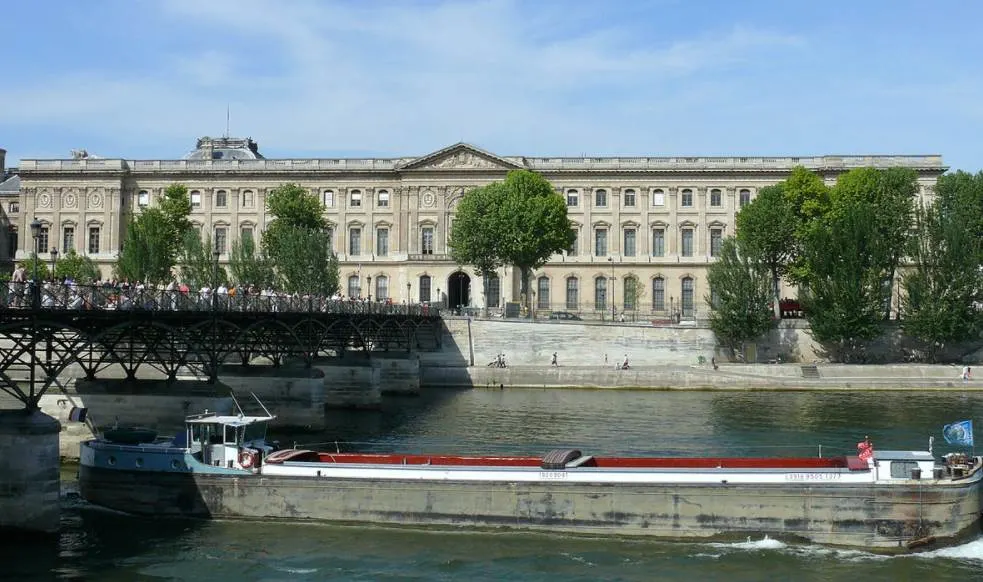
3. It was the first bridge of its kind in the city
The pedestrian bridge that was constructed in the early 19th century featured 9 arches and was the first metal bridge to be ever constructed in the city of Paris.
Today, the number of arches has been reduced to just 7 in order to align it with the Pont Neuf, the oldest standing bridge in Paris, which is located just east of the Pont des Arts at the western tip of the “Île de la Cité.”
Even though the bridge doesn’t look that big at first sight, it still has a length of 155 meters (509 feet) and a width of 11 meters (36 feet).
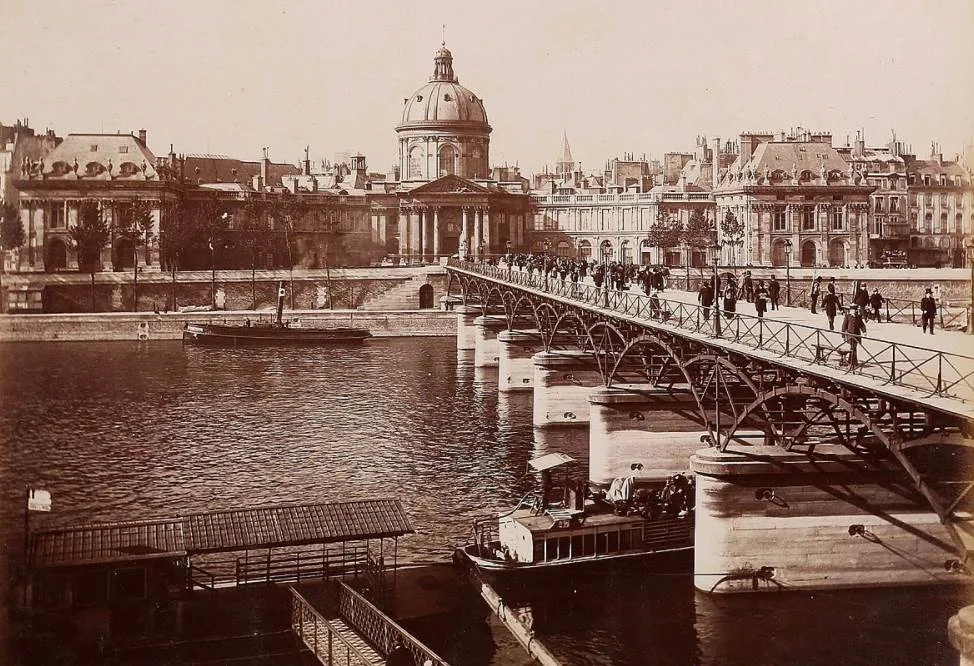
4. The bridge was completely rebuilt in the early 1980s
Because of the central location of the bridge in the city and the fact that it dates back to the start of the First French Empire, it was inscribed as a national historic monument of France on March 17, 1975.
During an inspection around the same time, however, it came to light that the bridge had suffered a lot of damage from both bombings during both World Wars and from boats crashing into the piers.
The bridge was subsequently closed in 1977 and partially collapsed in the year 1979 when a boat collided with it.
As you surely expected by now, this means that the bridge we see today isn’t the original bridge anymore but a new bridge that was constructed between 1981 and 1984.
Apart from the fact that the number of arches was reduced from 9 to 7, the bridge looks pretty much the same as the one built during the early 19th century.
The newly constructed bridge was officially opened by Jacques Chirac (1932-2019) on June 27, 1984, the future President of France who was the mayor of Paris back then
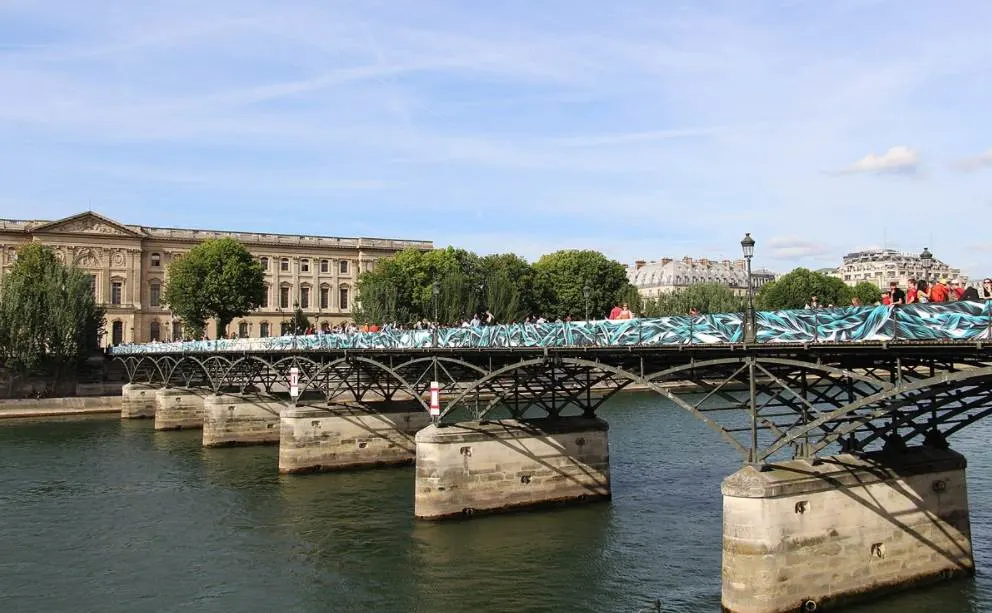
5. The bridge was used to attach lovelocks until 2015
The bridge was rebuilt in such a way that it was possible for a popular trend to emerge in late 2008. This trend consisted of couples attaching a lovelock onto the bridge and throwing the key into the River Seine below.
Even though many lovelocks were removed the following years, the trend was out of control, and an estimated 1 million+ were attached to the bridge by 2015, weighing a whopping 45 tonnes.
Needless to say that this weight caused a serious strain on the foundation of the bridge. That’s why all lovelocks were removed and the old railings of the bridge were replaced with panels that make it impossible to attach lovelocks.

More interesting facts about the Pont des Arts
6. Even though the design of the original bridge was rather simple, this wasn’t exactly the idea of the engineer of the bridge back then named Louis-Alexandre de Cessart and Jacques Dillon.
Their ultimate goal was to turn this bridge into a fascinating attraction in itself featuring landscaped gardens, lines of trees, and countless flower beds. This didn’t happen and a simple pedestrian bridge was built instead.
7. Even though the bridge is free to pass today, this wasn’t originally the case. Upon completion, it cost 1 sou to cross the bridge.
The sou is not to be confused with the “Solidus,” a Roman gold coin that was the equivalent of 12 silver coins. Following the French Revolution and the introduction of the French franc in 1795, the word “sou” was used to describe the 5 cent coin of the French franc.
8. The accident in 1979 was quite severe. The boat that rammed the bridge caused about 60 meters (196 feet) of the structure to collapse. Luckily, the bridge was closed just 2 years earlier because of the damage that had been caused throughout its history.
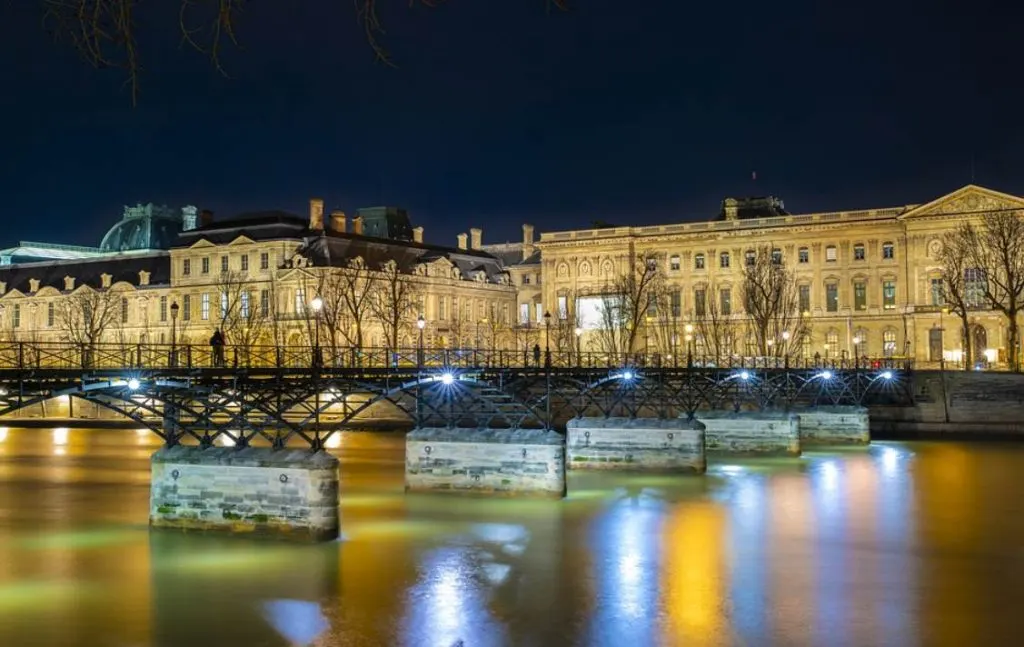
9. The bridge isn’t just a monument of national importance in France but was also declared a UNESCO World Heritage site in 1991.
That’s because it’s part of the entire bank of the river along with the entire bank of the River Seine which runs from the Eiffel Tower until the Île Saint-Louis. The entire architectural history of Paris can be seen in this area.
10. The Pont des Arts is one of the best-recognizable bridges in Paris. That’s why it has been featured in a wide variety of media. It has been featured in several movies, including the French drama “Le Pont des Arts” (2004) and the American heist movie “Now You See Me” (2013).
The bridge was also featured in the final episode of “Sex and the City” and was described by British art historian Kenneth Clark as follows:
What is civilization? I do not know. I can’t define it in abstract terms –yet. But I think I can recognise it when I see it: and I am looking at it now.
Yes, it’s fair to conclude that this is one of the most iconic locations in Paris, and that means quite something!
